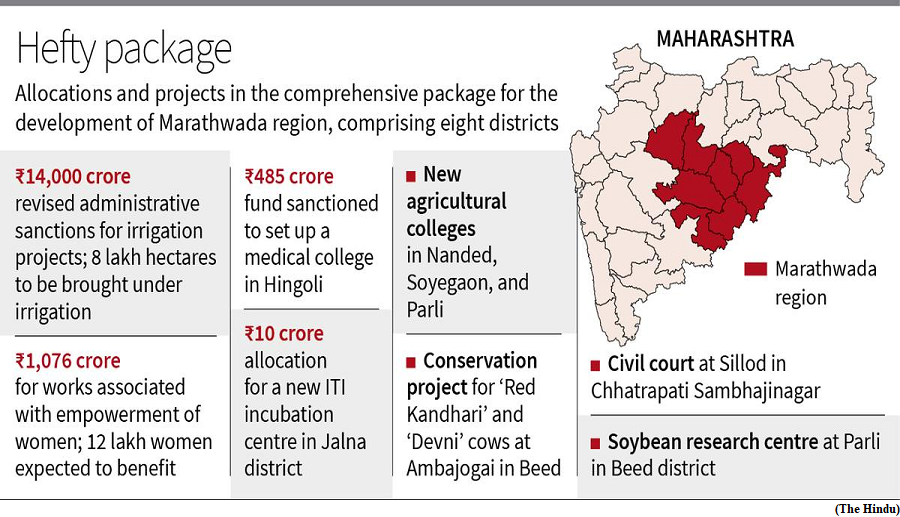To heaven and back at the roll of a dice (GS Paper 2, Education)

Why in news?
- Sarp-Rajju and five other indoor games have been developed by Indian Knowledge Systems (IKS).
- The games have been divided into three segments: dice-based, strategic, and those based on engagement.
- IKS, an innovation cell was founded at the All India Council for Technical Education (AICTE) in 2020, under the Union Ministry of Education, to promote interdisciplinary research on aspects of indigenous knowledge.
Sarp-Rajju:
- At a glance, the board game of Sarp-Rajju (Snakes and Ropes) looks like a regular set of snakes and ladders.
- A closer look reveals that there are ropes instead of ladders, with 72 (9x8), not 100 squares, with nine being the number of sensory windows and eight the parts of the body.
- Players start at cell 68, named vaikuntha (eternal bliss). The other cells too are named after elements from Hindu philosophy, like moha (delusion) and kaama (desire).
- Each throw of the dice indicates the number of cells the player must advance tracing their ‘karmic path’ back towards vaikuntha. If there are doubts about the rules, players can scan a QR code to access them.
Introduction to schools:
- By the end of 2023, 15 games are likely to be launched.
- This is in keeping with the ministry’s focus on the shift from rote-based to fun-filled learning that is one of the themes of the National Education Policy (NEP) 2020. The aim is to promote creativity and a multi-faceted growth.
- These indoor games will be introduced to school children in the next academic year, under the Bhartiya Games programme that has already launched 75 outdoor games from different parts of the country in the current school year.
- Some popular ones are Langdi-Taang (hopscotch), javelin throw, Patang Uddayan (kite flying), Seeta Uddhar (prisoner’s base), Mardani Khel (a form of martial arts).
Indoor games launched:
- Some indoor games have been included in the Jadui Pitara (magic box), a play-based learning programme tailored for children between 3 and 8 years.
Board Games:
- Among the board games which have been revived, reworked, and promoted are Bagh-Bakri (Tiger and Goats), Dash Ghuti (10 Pieces), and Chutaranga. Ninyaanave ka Pher (The Cycle of 99), a game from Rajasthan; and Golokdhaam, a game from West Bengal.
Bhartiya Games programme:
- The programme, available in 13 languages, was launched by Union Education Minister Dharmendra Pradhan in 2022, and has been developed under the National Curriculum Framework (NCF), one of the key components of the NEP.
- The Jadui Pitara comprises playbooks, toys, posters, flash cards, and indoor games.
Maharashtra Cabinet announces Rs. 45,000 cr. for development of drought-hit Marathwada
(GS Paper 3, Disaster Management)
Why in news?
- Maharashtra Chief Minister announced a ₹45,000-crore package for the development of the drought-hit Marathwada region in the State.

Key Highlights:
- A package of ₹45,000 crore will be given for the development of Marathwada. Revised administrative sanctions worth ₹14,000 crore will be given for irrigation projects. This paves the way for bringing eight lakh hectares under irrigation.
- Earlier, the Chief Minister reiterated his ambition to achieve a $1-trillion State economy, with the country aiming to achieve a $5-trillion economy.
Marathwada:
- The decision to implement various projects was taken during the first Cabinet meeting held in Marathwada’s Chhatrapati Sambhajinagar, formerly known as Aurangabad, after a gap of seven years to commemorate the 75th anniversary of Marathwada Mukti Sangram (Marathwada freedom struggle).
- The region, consisting of Chhatrapati Sambhajinagar, Nanded, Latur, Jalna, Beed, Parbhani, Dharashiv (formerly known as Osmanabad), and Hingoli districts, had been liberated from Nizam rule by Indian forces on September 17, 1948. The last such meeting was organised in the region in 2016.
Over 75 percent of European bumblebee species threatened
(GS Paper 3, Environment)
Why in news?
- More than 75% of European bumblebee species may be threatened in the next 40-60 years according to worst-case-scenario projections of bumblebee populations.
- Degradation of habitats and alterations of climate due to human activity are identified as key drivers of these estimated population declines.
- The findings underscore the importance of climate change mitigation policies to protect bumblebees.

Key observations:
- Observational data cover the periods 1901-1970 (past) and 2000-2014 (‘present day’), and projections are made up to 2080.
- Around 38-76% of European bumblebee species currently considered as non-threatened are projected to see their ecologically suitable territory shrink by at least 30% by 2061-2080.
- In particular, species from Arctic and alpine environments may be at the verge of extinction in Europe, with an expected loss of at least 90% of their territory in the same period.
- The parts of Scandinavia may potentially become refuges for displaced or threatened species, although it remains unclear whether these regions may be affected by human activity-driven changes.
Role of bumblebees:
- The results underline the critical role of globalchange mitigation policies as effective levers to protect bumblebees from manmade transformation of the biosphere.
- Around 90% of all wild plants and most crop plants benefit from pollination by animals.
- The bumblebee (Bombus) is a genus of bees considered to be especially important for the pollination of crops in the cold and temperate regions of the northern hemisphere.
Threats:
- Human-generated transformations of natural habitats and increases in temperature are implicated as key drivers of wildlife collapse; understanding the trajectory of insect populations is important for devising conservation efforts.




